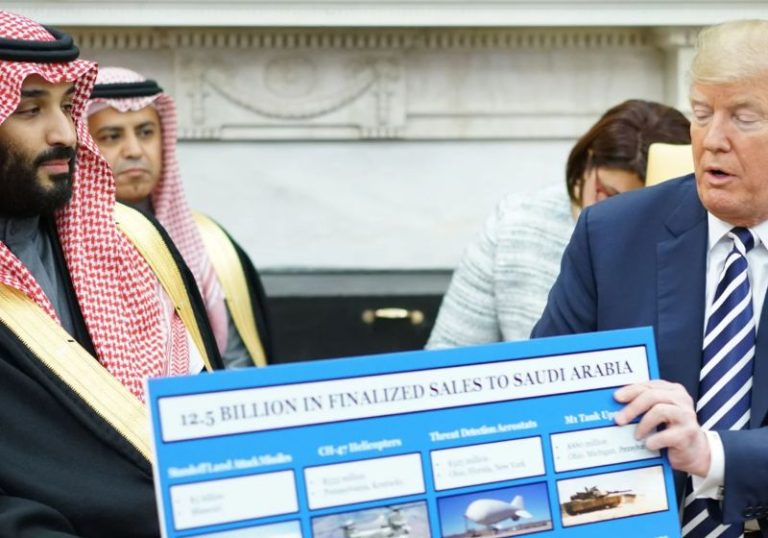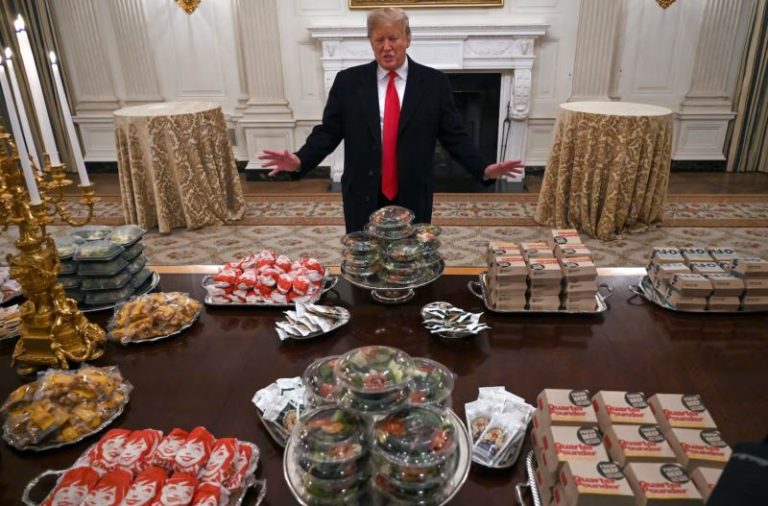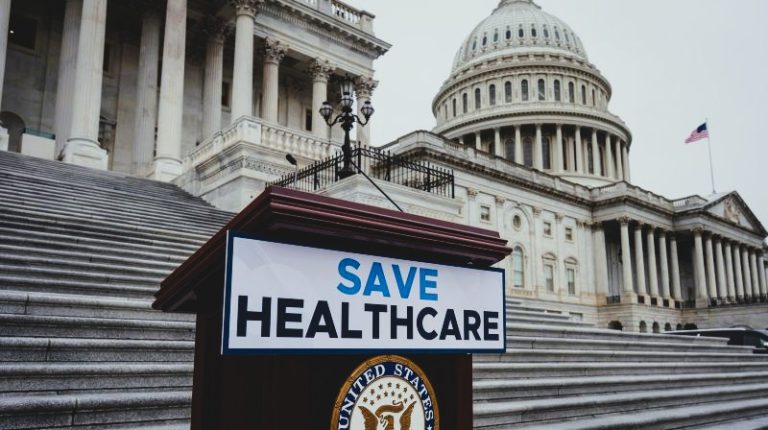

Trump’s order to resume nuclear weapons testing marks more than a policy shift; it signals a return to a mindset the world once struggled to escape.

By Matthew A. McIntosh
Public Historian
Brewminate
Introduction
President Donald Trump has ordered the Pentagon to resume U.S. nuclear weapons testing for the first time in more than three decades, a move that breaks with decades of bipartisan restraint and unsettles arms-control advocates across the world. In a statement posted on social media, Trump said he had instructed the Department of Defense to “immediately” begin preparations for testing “on an equal basis” with other nuclear powers, citing China’s and Russia’s expanding weapons programs as justification. The order follows months of rhetoric about restoring American “nuclear dominance” and comes just days before Trump’s scheduled meeting with Chinese President Xi Jinping in Busan, South Korea.
The announcement signals a sharp reversal of U.S. policy since 1992, when Washington ceased all explosive nuclear testing under a self-imposed moratorium that successive administrations upheld. Analysts warn the decision could fracture international arms-control agreements and provoke a renewed global arms race, particularly if other nuclear states interpret the U.S. move as a license to resume their own tests.
Ambiguous Justification
The White House has offered few details on what Trump’s directive entails, leaving uncertainty over whether it refers to full-scale nuclear detonations or subcritical experiments that stop short of explosive yield. The lack of clarification has already created confusion inside Washington’s defense and diplomatic circles, where officials are scrambling to determine how the administration plans to implement the order without violating long-standing international norms.
For now, the administration’s public justification centers on national security parity. Vice President J.D. Vance defended the decision, saying that verifying the reliability of America’s nuclear arsenal “is an important part of American national security.” He argued that rival powers “do not play by the same rules,” pointing to recent Russian and Chinese weapons tests as evidence that the United States must reassert its strength. Yet experts note that both the Comprehensive Nuclear-Test-Ban Treaty Organization and U.S. intelligence assessments have found no confirmed evidence that either country has resumed explosive nuclear testing, only modernization of existing programs.
Critics have denounced the announcement as reckless and politically motivated. Nevada Democrats in Congress, whose state hosts the former Nevada Test Site, demanded immediate clarification from the White House, warning that any resumption of underground detonations could endanger public health and reignite the trauma left by decades of fallout exposure. In a joint letter to the administration, they called the proposal “unnecessary, dangerous, and scientifically unjustified.”
Internationally, the reaction has been swift and alarmed. The Comprehensive Nuclear-Test-Ban Treaty Organization issued a statement calling any renewed testing “harmful and destabilizing for global non-proliferation efforts.” China and Russia, while continuing to expand their arsenals, both stopped short of confirming plans to resume tests of their own. Analysts told BBC News that Trump’s decision risks shattering a delicate international balance and could pressure nations such as India, Pakistan, and North Korea to follow suit, intensifying the threat of a new nuclear era.
The decision also reopens deep wounds at home and abroad. Communities in the Marshall Islands, once the site of extensive U.S. nuclear testing during the Cold War, have already voiced fear of renewed contamination and displacement. Survivors there continue to suffer long-term health effects, including elevated cancer rates, from decades of fallout exposure. “It feels like history is repeating itself,” said one activist in Majuro. “They have learned nothing from what they did to us.”
With no announced timeline or test location, the administration’s plan remains shrouded in ambiguity. Still, Trump’s directive represents a symbolic break with an era of cautious deterrence, trading the restraint of the past for a return to nuclear brinkmanship. Whether the United States proceeds with actual detonations or not, the president’s words alone have already shaken the fragile architecture of global arms control and revived an old fear once thought buried with the Cold War.
Background and Rationale
President Trump’s decision to restart nuclear weapons testing comes at a time when tensions with both China and Russia have intensified. During a rally in Arizona earlier this year, Trump accused Beijing and Moscow of “cheating the system” by secretly advancing their nuclear programs while the United States “sat on the sidelines.” In his October 30 post, he wrote, “Because of other countries’ testing programs, I have instructed the Department of War to start testing our nuclear weapons on an equal basis. That process will begin immediately.”
The order was issued just before Trump’s planned meeting with Chinese President Xi Jinping in Busan, South Korea, a gathering that was expected to focus on trade and military deterrence but is now overshadowed by nuclear escalation concerns. The timing appears deliberate, designed to send a message of strength ahead of diplomatic talks. Analysts suggest that the move also plays to Trump’s domestic political base, which has embraced his rhetoric about restoring America’s “unmatched power” and rejecting what he calls “global weakness.”
While the United States has maintained a testing moratorium since 1992, it has continued to modernize its nuclear arsenal through computer simulations and subcritical experiments that do not produce explosive yields. The Department of Energy’s National Nuclear Security Administration (NNSA) has long affirmed that these programs ensure the safety and reliability of the stockpile without the need for renewed detonations. Trump’s decision, therefore, represents not a technical necessity but a political signal, a show of force meant to assert U.S. dominance in a changing global order.
Domestic Response and Political Fallout
Reaction in Congress has been deeply divided. Republican allies have framed the decision as a long-overdue assertion of American sovereignty, while Democrats and independent experts warn it could destabilize decades of international progress. Nevada lawmakers, in particular, have expressed alarm. A coalition of Nevada Democrats wrote to the White House demanding details on where and when testing might occur, citing the human and environmental toll of past detonations at the Nevada Test Site.
Senator Catherine Cortez Masto called the order “reckless, dangerous, and unnecessary,” noting that Nevadans still live with the contamination of past testing. Her comments echoed the frustration of local leaders who view the renewed testing threat as reopening an old wound. Native tribes and downwind communities in Utah and Arizona, still grappling with generational health effects from mid-century fallout, have also voiced strong opposition.
Within the defense establishment, the reaction has been more measured. Some senior Pentagon officials said they were caught off guard by the announcement and had received no formal guidance on implementation. Others suggested the president’s directive could remain largely symbolic unless followed by an official budget request or testing order under the Department of Energy. Still, even the perception of renewed testing has already rippled through the diplomatic community, raising alarm among NATO partners and arms-control advocates.
International Repercussions
The global response has been swift and anxious. The Comprehensive Nuclear-Test-Ban Treaty Organization condemned Trump’s announcement, warning that “any explosive nuclear weapon test by any state would be harmful and destabilizing for global non-proliferation efforts and for international peace and security.” The United States signed the treaty in 1996 but never ratified it, relying instead on voluntary compliance. A resumption of testing would effectively nullify that restraint and could invite others, particularly China, Russia, India, and Pakistan, to follow suit.
European allies expressed concern that Trump’s move undermines decades of multilateral coordination aimed at preventing nuclear escalation. France and the United Kingdom reaffirmed their commitment to the moratorium, while officials in Moscow and Beijing offered muted responses, perhaps to avoid confirming Trump’s accusations of secret tests. Analysts note that a renewed testing environment could also embolden North Korea, whose leader Kim Jong Un resumed missile launches earlier this year in defiance of U.N. sanctions.
In the Pacific, the announcement has revived painful memories. Residents of the Marshall Islands, where the United States conducted dozens of nuclear tests between 1946 and 1958, have expressed outrage. Survivors of those explosions still face high cancer rates and ecological devastation, with little restitution. “We are still living with the poison they left behind,” said one local activist. “Now they want to do it again?”
Strategic Implications and Outlook
While Trump’s supporters argue that renewed testing is necessary to deter adversaries and ensure the credibility of the U.S. deterrent, arms-control experts insist that America’s arsenal remains fully reliable without new detonations. The United States already possesses the world’s most sophisticated verification and simulation technology, eliminating the need for explosive validation.
Should the administration proceed with even a single detonation, it would mark a symbolic break from three decades of international restraint. It would also risk igniting an arms race at a time when global trust in U.S. leadership is fragile. Such a shift could unravel hard-won diplomatic agreements and erode America’s moral authority on non-proliferation.
For now, no test site or date has been announced, and the Department of Defense has declined to provide further comment. Yet the mere suggestion has already changed the tone of global diplomacy. After decades of cautious stewardship, the world’s most powerful nation appears ready to reopen the gates of the atomic age, not because it must, but because it can.
Conclusion: A Return to the Atomic Shadow
President Trump’s order to resume nuclear weapons testing marks more than a policy shift; it signals a return to a mindset the world once struggled to escape. For over three decades, restraint was the quiet measure of nuclear strength: the belief that stability depended not on how often nations tested their weapons, but on how firmly they resisted the impulse to do so. Now, that restraint hangs in question.
If the administration follows through, the decision could unravel an unspoken global pact that has kept nuclear explosions confined to history books. The Comprehensive Nuclear-Test-Ban Treaty Organization warns that even one detonation risks undoing decades of diplomatic progress. Yet for Trump, the move appears as much about symbolism as strategy, a demonstration of willpower designed to assert dominance in a world of competing authoritarians.
The irony is hard to miss. Trump once mocked North Korea’s Kim Jong Un as “Rocket Man,” but his own fixation on proving strength through spectacle suggests a similar playbook. The difference lies only in scale and consequence. A single test would not simply rattle test-site deserts; it would echo through treaties, alliances, and generations still living with radioactive scars.
Whether the directive becomes action or remains political theater, its impact is already real. It has reignited fears that the atomic age, once thought safely sealed behind the moratorium of 1992, may again flicker to life. In the end, the question is not whether the United States can resume nuclear testing, but whether it should. The world has already learned what happens when power outpaces wisdom.
Originally published by Brewminate, 11.06.2025, under the terms of a Creative Commons Attribution-NonCommercial-NoDerivatives 4.0 International license.


